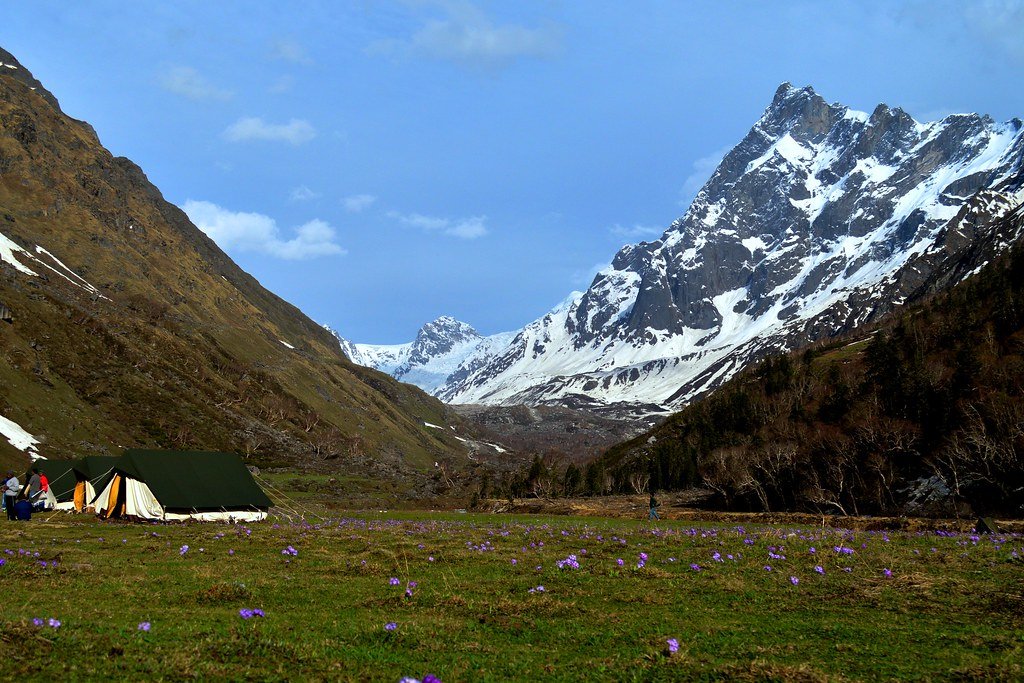Naimisharanya: Tale Of 7000 Years Old Temples | Top 12 Places To Visit In Naimisharanya | Things To Do
Naimisharanya, situated in Uttar Pradesh, India, is a sacred forest steeped in ancient and divine significance. It holds the distinction of being the location where the first Purana, epic stories of Hindu mythology, was narrated by Suta to the sages. This sacred site also served as the teaching grounds for Ved Vyasa, the sage credited with compiling the Vedas, the foundational scriptures of Hinduism. Notable holy places within Naimisharanya include Chakra Tirtha, where Lord Vishnu’s discus created a circular pond; Vyas Gaddi, the spot where Ved Vyasa instructed his disciples; Hanuman Garhi, where Lord Hanuman protected the sages; and Mishrikh Dadhichi Kund, where sage Dadhichi sacrificed his bones to craft a weapon for the gods. Naimisharanya holds great significance as a pilgrimage destination for Hindus, who believe that a visit to this forest can bestow salvation and inner peace.
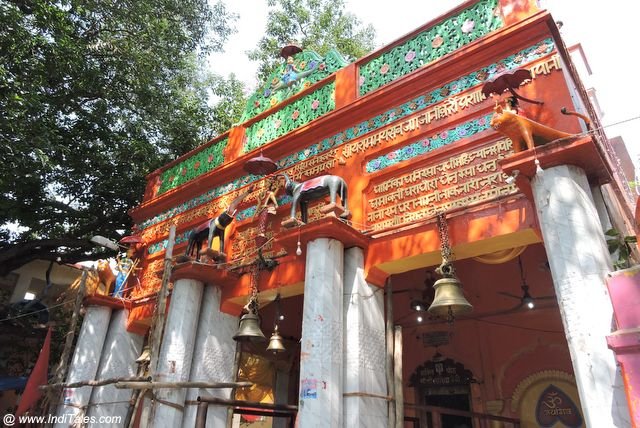
Naimisharanya Famous Temple:
Naimisharanya Known for its association with sages, ancient rituals, and the churning of the cosmic ocean, the sacred forest features Vyas Gaddi, believed to be where Sage Vyasa narrated sacred texts. Chakra Tirtha, a sacred water tank, and temples like Hanuman Garhi add to the religious ambiance. With historical and cultural heritage, Naimisharanya attracts pilgrims seeking solace and a connection with Hindu epics in a tranquil setting.
Here are some of the best places to visit in Naimisharanya:-
1. Chakra Tirtha
Chakra Tirtha, located in Naimisharanya, Uttar Pradesh, India, is a sacred circular pond believed to be formed by Lord Vishnu’s discus. Immersing oneself in this sacred water is considered profoundly purifying and spiritually uplifting. Legend has it that Lord Brahma created a chakra using the sun’s rays, guiding sages to follow it until it landed in Naimisharanya. This auspicious site became the center of penance and worship. The chakra created Chakra Tirtha, a significant water source, which was later regulated by Goddess Lalita Devi. Chakra Tirtha holds historical importance as the site where Ved Vyasa revealed numerous holy scriptures to Suta, who then narrated them to Shaunak and other sages. These scriptures encompass the Vedas, Puranas, Shastras, and the Satyanarayan Katha.
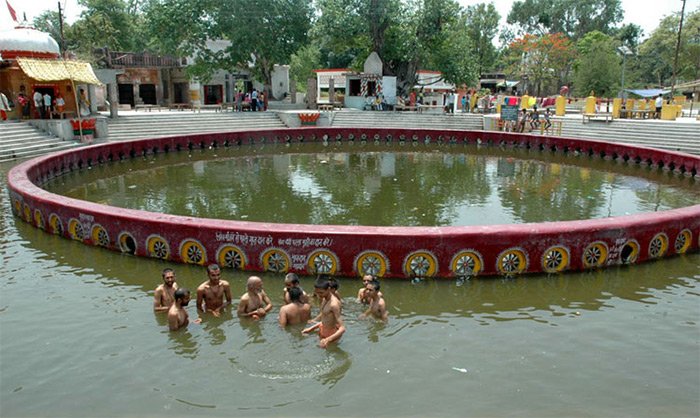
2. Sri Lalita Devi Temple
Sri Lalita Devi Temple, located in Naimisharanya, is a revered shrine dedicated to Goddess Lalita, the presiding deity of the town. As one of the 51 Shakti Peethas, it is believed to be the sacred spot where the heart of Goddess Sati fell after Lord Vishnu dismembered her body with his discus. The temple boasts a beautiful construction with a well-balanced cantilever and notable elephant statues adorning the entrance. The temple is entwined with the legend of Goddess Lalita, who is believed to have manifested twice at this sacred site. Firstly, to regulate the water flow of Chakra Tirtha, a holy pond created by Lord Brahma’s wheel. Secondly, to assist the gods in their battle against the demons.
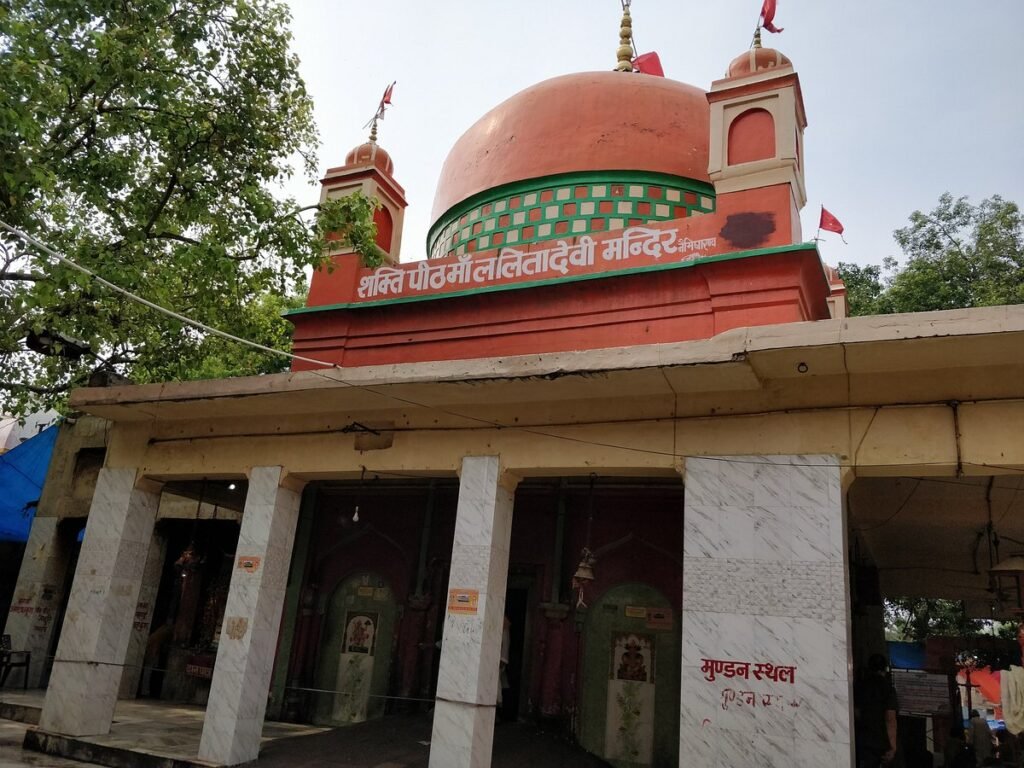
3. Vyasa Gaddi
Vyasa Gaddi, situated in Naimisharanya, is a sacred location where the revered sage Ved Vyasa imparted knowledge of Hindu scriptures like the Vedas, Shastras, and Puranas beneath an ancient banyan tree. With a history dating back more than 5000 years, the tree is believed to have roots tracing to the time of the Mahabharata. The term “Vyasa Gaddi” translates to the seat of Vyasa, signifying the spot where the sage used to sit under this ancient tree. Within the site, a small temple dedicated to Vyasa exists, featuring triangular clothing piles symbolizing the deity. Vyasa Gaddi holds significance as the place where Vyasa first narrated the Sri Satyanarayana Vratha Katha, a well-known ritual story.
4. Dashashwamedh Ghat
Dashashwamedh Ghat in Naimisharanya holds sacred significance as the site where Lord Rama conducted the tenth Ashwamedha Yajna, a horse sacrifice ritual, following his victory over the demon king Ravana. At this ghat, there is a temple featuring idols of Lord Rama, his wife Sita, his brother Lakshmana, and Lord Shiva in the form of Siddheshwar Mahadev. It’s important to note that this Dashashwamedh Ghat is distinct from the more renowned Dashashwamedh Ghat in Varanasi, situated along the Ganga River, famous for its spectacular evening aarti. Despite the shared name, both ghats are associated with the legend of Brahma creating a ghat with ten horses to welcome Shiva. Dashashwamedh Ghat in Naimisharanya stands among the town’s sacred places, drawing pilgrims from across India.
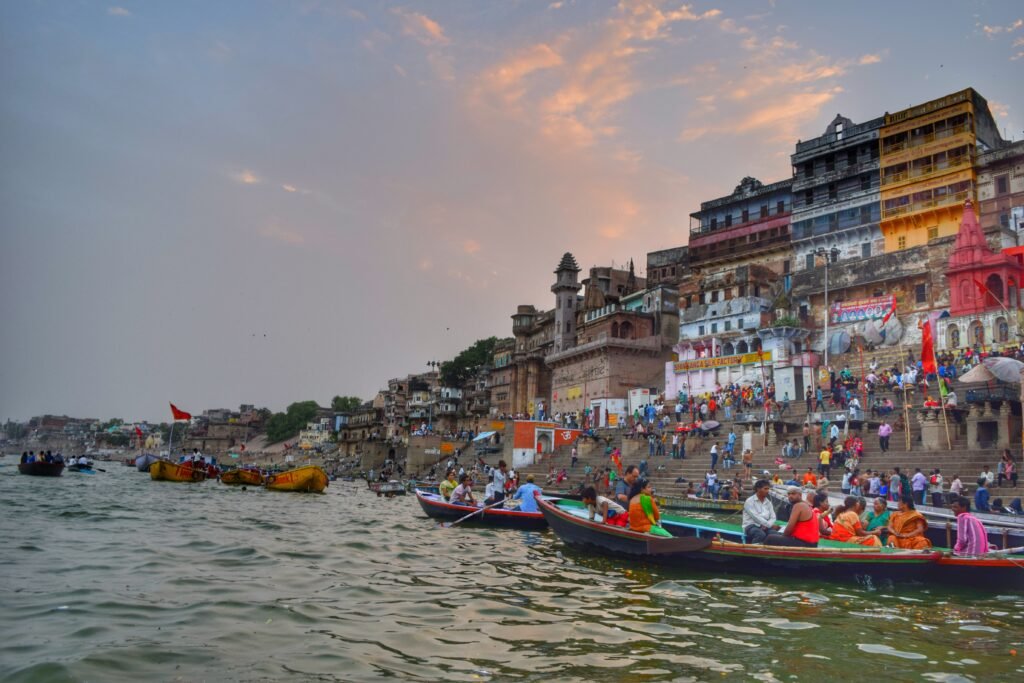
5. Suta Gaddhi
Suta Gaddi, located in Naimisharanya, is a sacred site where Sage Suta Goswami delivered profound teachings on Hindu scriptures like the Vedas, Puranas, Upanishads, and devotional literature to an assembly of sages led by Shaunaka Rishi. His narrations included stories of various rituals and vows, such as the Satyanarayana Vrata, Ekadashi Vrata, and Ganesha Chaturthi Vrata. Suta Goswami, having heard the Bhagavata Purana from Shukadeva Goswami, who had spoken it to Parikshit Maharaja, added to the sacred knowledge. Significantly, Suta Gaddi is associated with an event where Lord Balarama, elder brother of Lord Krishna, took action against Romaharshana Suta, father of Suta Goswami, for disrespecting him. Romaharshana Suta failed to acknowledge Balarama’s entry into the assembly, and Balarama, using a blade of grass, ended his life. Subsequently, Suta Goswami was appointed as his successor. This historic site, sheltered by an ancient banyan tree over 5000 years old, houses a small temple dedicated to Suta Goswami.
6. Shri Narada Temple
The Shri Narada Temple in Naimisharanya is a revered shrine dedicated to Sage Narada, acknowledged as the messenger of God and a proponent of Bhakti (devotion). Famous for his musical skills and prominent role in Puranic stories, Narada is worshipped near Chakra Tirtha, where he underwent penance and received Lord Vishnu’s blessings. The temple features a splendid idol of Narada playing his veena, a stringed instrument. Devotees visit the temple seeking guidance and inspiration from Narada, believed to assist them on their spiritual journey.
7. Balaji Temple
The Balaji Temple in Naimisharanya is a sacred shrine devoted to Lord Venkateshwara, also known as Balaji, representing a form of Lord Vishnu. Particularly favored by devotees from Andhra Pradesh, where Tirupati Balaji holds prominence, the temple features a prominent flagpole symbolizing the divine presence. Additionally, the temple showcases idols of Lakshmi Devi and Bhudevi, consorts of Lord Venkateshwara, positioned on his left and right sides. Providing overnight accommodation facilities for pilgrims, Balaji Temple stands among the numerous revered places in Naimisharanya, drawing devotees from across India.
8. Machhrehta
Machhrehta, situated near Naimisharanya, holds significance as the location where Sage Machhrehta Nath engaged in meditation and achieved enlightenment. Referred to as Aaina E Akbari, it earned mention in the historical book of the same name by Abul Fazl, a courtier of Emperor Akbar. The area boasts several religious sites, including the Imambara, Machhrehta Nath Temple, and Kali Temple. Additionally, an ancient inn provides accommodation for pilgrims and travelers. As one of the many revered places in Naimisharanya, Machhrehta attracts pilgrims from across India.
9. Havan Kund
Havan Kund, located in Naimisharanya, holds sacred significance as the site where ancient sages and saints conducted Yajna and other sacrificial rituals. Yajna, a ceremonial act involving the offering of fire to the gods, accompanied by the chanting of mantras and prayers, took place at this revered spot. Havan Kund, typically constructed from bricks or stones, serves as a fire-altar where the sacred fire is kindled, and offerings are made. This site stands among the many revered places in Naimisharanya, drawing pilgrims from all corners of India.
10. Swayambhu Manu And Satarupa
Swayambhu Manu and Satarupa, the inaugural human couple in Hindu mythology, are the mind-born progeny of Brahma, the creator god. After engaging in a 23,000-year penance in Naimisharanya, a sacred forest in Uttar Pradesh, they sought Lord Narayana (Vishnu) as their son. Their union and family life unfolded in Naimisharanya, where they had five children: Priyavrata, Uttanapada, Akuti, Devahuti, and Prasuti. Naimisharanya stands as one of India’s oldest and most venerated pilgrimage sites, believed to be the dwelling place of 33 crore gods and goddesses, steeped in numerous legends and scriptures. It is also the historical realm where the first Manu governed his subjects and divided the Vedas into four sections.
11. Dadhichi Kund
Dadhichi Kund, situated in Naimisharanya, is a sacred site associated with the sage Dadhichi’s selfless act. Here, Dadhichi sacrificed his bones to craft a weapon for Indra, the king of gods, in order to defeat the demon Vritrasura. Also known as Misrikh Teerth, the pool is believed to contain water from various pilgrimage sites. Adjacent to the pool, a temple and ashram feature inscriptions narrating Dadhichi’s life story. Dadhichi Kund holds significant reverence and devotion among Hindus.
12. Pandav Kila
Pandav Qila stands as an ancient fortress in Naimisharanya, serving as the dwelling for the Pandavas during their exile in the legendary Mahabharata. According to the tale, King Virat constructed the fort, extending refuge to the Pandavas in concealed identities. Adorned with statues depicting the Pandavas and Lord Krishna, their revered friend and guide, Pandav Qila emerges as a historical and cultural attraction in Naimisharanya. Visitors can delve into the tales and characters of the Mahabharata at this notable site.
How To Reach Naimisharanya
- By Road:
- Naimisharanya is well-connected by road. You can take a bus or hire a taxi from nearby cities like Lucknow, Sitapur, or Ayodhya.
- The journey by road provides flexibility, and you can enjoy scenic views on the way.
- By Air:
- The nearest airport is Amausi International Airport in Lucknow, which is well-connected to major cities in India.
- From Lucknow, you can hire a taxi or use other local transportation to reach Naimisharanya.
- By Train:
- The nearest railway station is in Sitapur, approximately 70 kilometers away from Naimisharanya.
- After reaching Sitapur, you can hire a taxi or use local transport to reach Naimisharanya.
Here is a table of trains running from Delhi to Sitapur along with their name, number, timing and charges:
| Train Name | Train Number | Departure Station | Departure Time | Arrival Station | Arrival Time | Duration | Fare |
|---|---|---|---|---|---|---|---|
| Satyagrah Express | 15274 | Anand Vihar TRM | 17:30 | Sitapur City | 02:30 | 9h 0m | ₹310 – ₹1,753 |
| SHC Suvidha SPL | 84412 | Delhi | 23:00 | Sitapur | 06:25 | 7h 25m | ₹309 – ₹1,748 |
| Lucknow Mail SPL | 02230 | New Delhi | 22:00 | Hardoi | 04:43 | 6h 43m | ₹290 – ₹1,590 |
| Champrn SGR SPL | 04010 | Anand Vihar TRM | 23:45 | Sitapur | 08:20 | 8h 35m | ₹310 – ₹1,753 |
You can find more details about these trains and book your tickets online from websites like RailYatri, MakeMyTrip, ixigo, or IRCTC. I hope this helps you plan your journey. 😊
Tourist Places Nearby Naimisharanya:
Here is a table of some nearby cities to Naimisharanya along with their approximate distance from it:
| City | Distance |
|---|---|
| Lucknow | 100 km |
| Ayodhya | 150 km |
| Allahabad | 300 km |
| Mathura | 350 km |
| Agra | 350 km |
| Khajuraho | 360 km |
| Gorakhpur | 360 km |
| Varanasi | 400 km |



